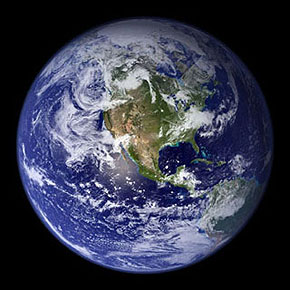 One of the criticisms of cap-and-trade from the left is that it would create a gigantic new market in carbon trading that would allow Wall Street players like Goldman Sachs to generate a huge new asset bubble to replace the late lamented housing bubble. After all, why else would Goldman have a legion of lobbyists working overtime on Capitol Hill to try and get cap-and-trade passed?
One of the criticisms of cap-and-trade from the left is that it would create a gigantic new market in carbon trading that would allow Wall Street players like Goldman Sachs to generate a huge new asset bubble to replace the late lamented housing bubble. After all, why else would Goldman have a legion of lobbyists working overtime on Capitol Hill to try and get cap-and-trade passed?
Dean Baker pours cold water on this theory today, but then says this:
The reason for the interest is much simpler. The outstanding value of carbon permits will almost certainly run into the trillions of dollars once the system is fully up and running. The annual trading in these permits and various derivative instruments (e.g., options, futures, swaps of various types) is likely to also run into the trillions of dollars, perhaps tens of trillions.
A market that trades $10 trillion a year would generate $25 billion a year in revenue, if fees and commissions average 0.25 percent. If Goldman can capture 30 percent of these trades by getting in on the ground floor, then it stands to generate more than $8 billion each year in revenue from carbon trading. This is enough to explain Goldman’s enthusiasm for cap and trade — it’s all about as clear as it can possibly be.
I’ve seen estimates like this before and I’ve never quite understood where they come from. Here’s a back-of-the-envelope guess about the size of the U.S. carbon market:
- Total annual U.S. emissions come to about 6 billion tons of CO2e (carbon dioxide equivalent).
- Most of the permits for these emissions will simply be allocated and used. At a guess, maybe 20% of them will be traded on the open market. That’s 1.2 billion tons.
- Another guess: each permit will trade hands four times a year. That’s 4.8 billion tons.
- Price per ton on the European market is currently about $25/ton, so let’s use that as a rough price guideline.
- Bottom line: the total value of the carbon trading market comes to $120 billion.
There’s a lot of guesswork there, so here’s another data point: in the first half of 2009, the European ETS carbon market traded 3.1 billion tons of CO2e worth about $50 billion. That comes to $100 billion per year for a market a little bit smaller than the U.S. market. So that checks.
In other words, something in the neighborhood of $100 billion seems like a decent guess for the size of the U.S. cap-and-trade market. Over time, as allocations decrease and trading increases, that will go up. But in the near and medium term, it’s going to be in the range of $100-200 billion, not $10 trillion, netting traders commissions of about $500 million or so. That’s just the basic trades, of course, but the derivative market for carbon ought to be simple commodity stuff like options, swaps, and futures, not the rocket science credit derivatives that fueled the housing bubble. I don’t have a good feel for how much that expands the market, but if it’s 4x then commissions will come to $2 billion or so. If Goldman gets 30% of that, they’re looking at $600 million, which is about 1% of the $50 billion or so they book in revenue every year. Not exactly a super gigantic new market for them.
Still, even $600 million is worth lobbying for. And anyway, this is all rough guesswork and I might be way off. But I’m still curious where the trillion dollar plus estimates have come from. They just don’t seem to be in the right ballpark to me.


















